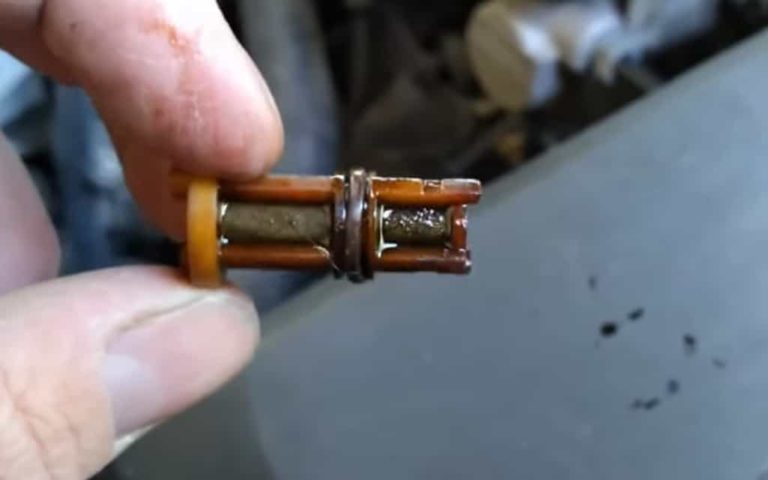We have heard of some people looking into doing a 5.3 oil pressure sensor screen delete. They wonder if it is worth pursuing this or not.
Now, it is typical for sensors to incur some issues over time. After all, this component tends to be prone to debris, sludge and dirt that can impact its performance. When you have your filter loaded with debris, the sensor can malfunction. Therefore, it is important to know whether it is worth removing the sensor screen completely or not.
In this post, we will cover everything you need to know about a 5.3 oil pressure sensor screen delete and whether it is a good or bad idea. Let’s dive right into it.

Facts About A 5.3 Oil Pressure Sensor Screen Delete
When you have an issue with your oil pressure, warning signs come up including the warning light on your dashboard steadily lit or blinking. You may also notice that your gauge reads zero, and this means there is a problem.
If you have a bad sensor, you need to check right away what is causing the issue. You should get ample notifications beforehand if there are issues with your vehicle. Some people simply ignore things even when they are alerted of a problem. Yet, this is not the smartest choice since an issue definitely needs to be addressed before things take a turn to the worst.
You may want to perform a complete diagnosis of the problem. But it is not always very easy for some people, especially when their 5.3 oil pressure sensor screen is hard to access. This is why you need to go to a mechanic who can take care of the diagnosis and troubleshooting for you.
If you wish to do this yourself, you need to remove a plastic cover on your engine before you disconnect your electrical connection. Upon pressing your lock tab, this will cause the lock to snap and release. Then, you should be able to depress and loosen. Afterwards, changing the sensor at the back part of your engine block is possible. Replace the unit, and this should fix your concern with noises and other signs of problem while at the same time enjoying a smoother and more seamless ride.
Once the sensor is out, you are close to getting your problem solved. You need to check the sensor screen, which may be blocked. This should explain the inconvenience you are experiencing. Pull the screen out and discard this. Then, you should not see any warnings on your dashboard afterwards.
Generally, when your vehicle uses a 5.3-liter engine, the normal pressure varies when you are idle. It also depends on various vehicle conditions. But the typical pressure is 20 for idle vehicles and goes up to 50 to even 60 once the engine warms up. However, if you notice a lower reading, then you definitely need to check your car as there are potential problems that must be addressed.
For example, your vehicle has 150,000 miles recorded on it and the engine is in good condition because you follow the manufacturer-specified oil changes. When you drive your vehicle for a while, you may notice some issues with your gauge. This is why you may begin to worry.
We recommend testing your pressure at the filter and the switch. You may observe that the oil pressure is lower than normal. Test your pressure relief pump, and if it is not working, you need to replace this unit. After doing so, your driving experience should be much better. However, what if the problem still persists?
In this case, you may be thinking about removing the oil pressure sensor screen completely, thinking that it can address the issue once and for all. Now, when your oil pump releases too much pressure, your relief valve is opened to let some pressure out. This happens most commonly when you have a cold engine, or when you are driving at a high speed. Or, perhaps you have a thick oil. But most of the time, the valve is shut, unless there is some damage to this part.
So, when you have an open valve because of damage, the pressure becomes lower – and this includes during the time your vehicle is idle. Therefore, if you observe a low pressure and some noises coming from your engine, you need to inspect your valve.
But supposing it is not the issue, the next component to look into would be your O-ring. It is common for the O-rings to get worn out or become damaged. When this happens, oil pumps air through the gaps, and not clean oil coming from the pan. As the pump receives air, you may notice this more as you drive fast because of the higher flow.
On the other hand, an idle state means having a lower oil flow. The decrease can even go even lower and can be quite dangerous. Consider testing for this as you raise your oil level in your crankcase when dipping your pickup tube. Start your engine and check the gauge reading. If it stays within the normal range as you are idle, then you need to replace your pick up tube.
But keep in mind that it could also be a case of having debris stuck on the screen. Dirt tends to accumulate on the screen, which reduces its performance. With that being said, a simple cleaning of the screen should do the trick. In fact, it is not even an expensive fix and can spare you from having to go through the trouble of replacing your screen.
Read More: Burning Oil Smell Through Vents: 5 Common Causes & Fix
Conclusion
If you are torn between replacing and removing the screen, we highly recommend replacing it in case cleaning does not fix the problem. The screen serves a purpose for your oil pressure sensor, so it is important to have one installed instead of completely eliminating it.

